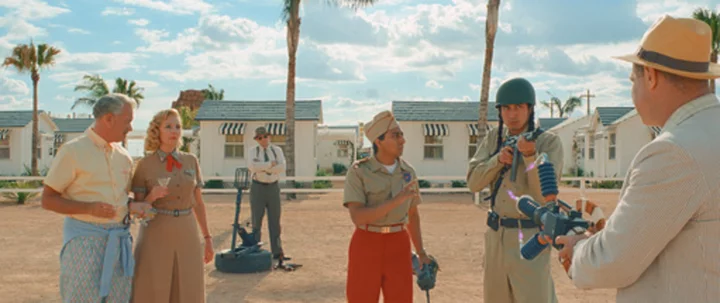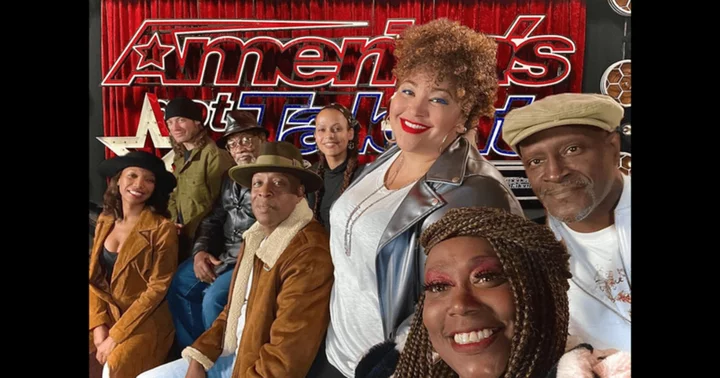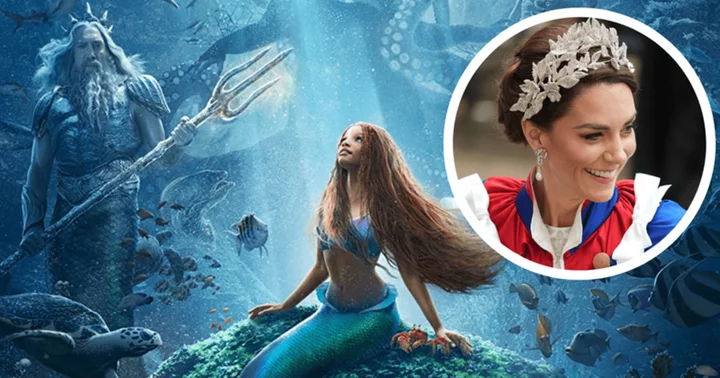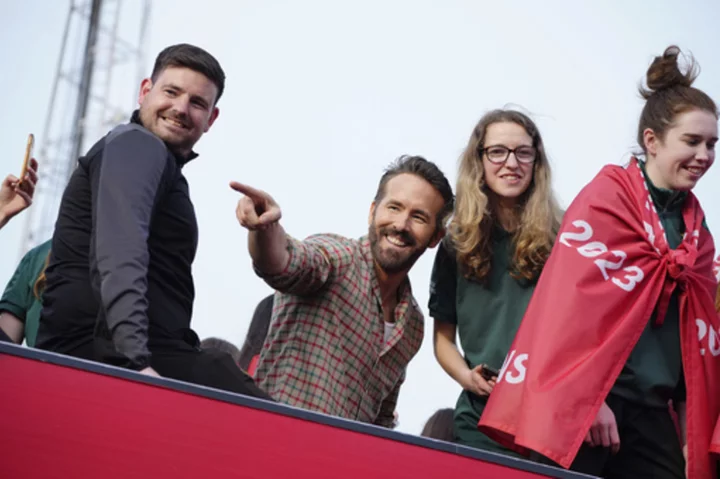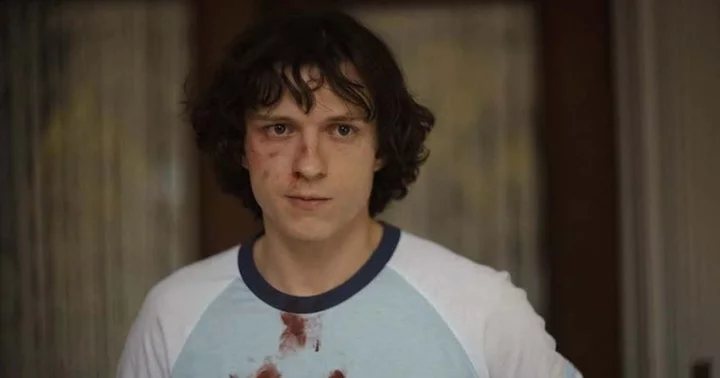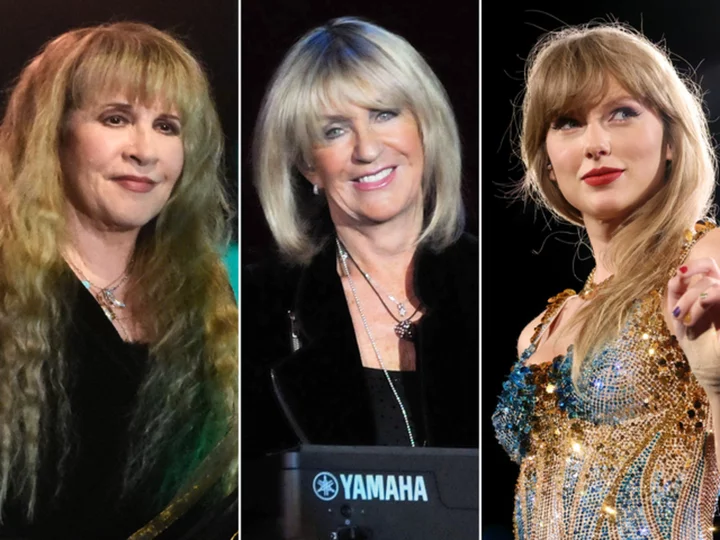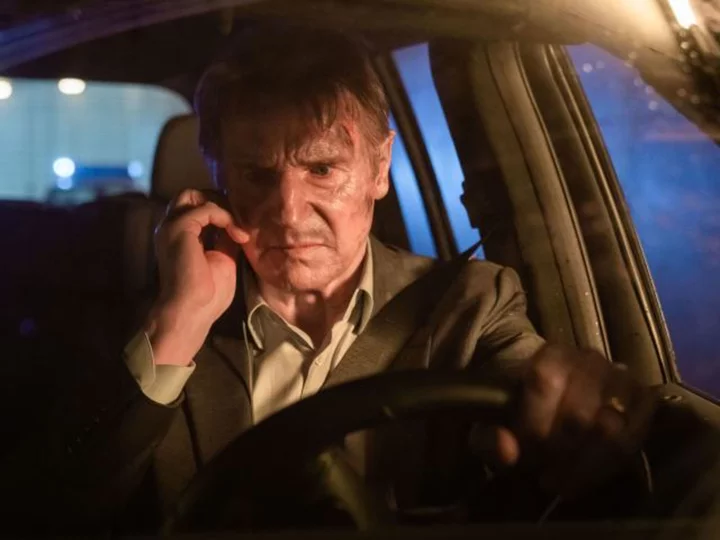NEW YORK (AP) — When Tony Revolori, then a 17-year-old with little Hollywood experience, was beginning to shoot Wes Anderson’s “The Grand Budapest Hotel,” Jason Schwartzman took him aside to give some advice.
No one knew better than Schwartzman what Revolori, who was starring alongside Ralph Fiennes, was in for. Schwartzman was by then a regular member of Anderson’s troupe, but he was also 17 when he first broke through as Max Fischer in Anderson’s “Rushmore.”
“He looked at me and he said, ‘None of this is going to make sense until you’ve actually gone through it,’” Revolori recalls. “Your life is going to change in no way and every way. But as long as you keep the people around you, you’re good.’”
Much has been made of Anderson’s recurring regulars, like Bill Murray, Adrien Brody and Owen Wilson. But for many young actors, Anderson’s film sets have been their first real blush with moviemaking — or, at least, Anderson’s elegant style of it.
Since “Rushmore” introduced Schwartzman, Anderson’s films have been nurturing, if surreal, environments for young performers and a singular rite of passage. Anderson's productions are atypically communal, with nightly feasts among cast and crew, and a spirit that can resemble summer camp. For young actors, it can be a thrilling education.
“This is one of the most powerful learning experiences I’ve ever had,” says Grace Edwards, 19, one of the newcomers of Anderson's latest, “Asteroid City.”
Part of the joy of “Asteroid City” is seeing successive generations of Anderson actors, including Schwartzman, Revolori and a new crop of young faces, assemble like homegrown players on a team of all-stars. For Schwartzman, it brings back memories of his “Rushmore” audition — his first glimpse at Anderson's way of treating young actors. On his way out, Anderson asked his opinion about a wardrobe item.
“While I was answering it, I was thinking: Why does this feel so bizarre?” says Schwartzman. “I realized because no adult other than my family had, at that age, asked me a question and really listened to the answer. I was being related to by a person who was 27. He was an adult, but not.”
In the years since, the young actors who have come through Anderson’s films — often in prominent roles — have had similar encounters. Jake Ryan was just seven when he played a younger brother in 2012's “Moonrise Kingdom.”
“I don’t remember much, but I remember feeling at home there,” says Ryan, now 19. “It felt very cozy.”
“Asteroid City,” which opens nationwide Friday, may be Anderson's most multigenerational film yet. The story features frames within frames, but the heart of the movie concerns a fictional 1955 Southwest town where a widowed war photographer named Augie Steenbeck (Schwartzman) arrives with his bright son Woodrow (Ryan, in his third Anderson movie) and three younger daughters.
A visit with their grandfather (Tom Hanks) awaits, but first there’s a stargazer convention to commemorate a meteorite impact. The gathering has also lured a renowned movie star (Scarlett Johansson) and her intelligent daughter (Grace Edwards).
The pains, regrets and melancholies of the adult characters mingle with the fresher but no less complex experiences of the teenagers getting a taste of love, death and fellowship for the first time.
In Anderson’s films, younger characters tend to be just as adult, if not more so, than the grown-ups. Gene Hackman’s Royal Tenenbaum or George Clooney’s Fantastic Mr. Fox are far from paragons of maturity. “Moonrise Kingdom” starred Kara Hayward and Jared Gilman as a pair of 12-year-old runaway romantics who sway to Françoise Hardy’s “Les Temps de l’Amour.” Revolori’s “lobby boy” Zero played sidekick to Fiennes’ concierge, M. Gustave.
In “Rushmore,” Schwartzman’s Max and Bill Murray’s Herman Blume are decades apart but equal rivals in love and revenge. At the beginning of shooting, Schwartzman asked Anderson why his character looked up to Murray's.
“And he says, ‘Well, I don’t think he looks up to him. I think he sees eye-to-eye with him,’” remembers Schwartzman. “That’s the funny thing about these movies. They’re not for kids, but they are, in a weird way. It’s like they’re for kids when they grow up.”
When Edwards, 18, was auditioning for “Asteroid City,” Anderson had her first read from “Moonrise Kingdom” — both the part of 12-year-old Suzy and her mother, played by Frances McDormand. Once she landed the role, Anderson handed her books about Hollywood in the 1950s to read and films to watch.
“I watched some Jodie Foster films because he figured the character was very sensible and very much a Jodie Foster-like personality,” Edwards says. “He wanted me to get a strong sense of what she was like on screen.”
Revolori describes Anderson as almost “a pseudo father.” After “Grand Budapest” came out, they continued to regularly email. Revolori depended on Anderson's advice in navigating his career.
“I think he enjoys working with young performers and discovering someone that he sees talent in and giving them an opportunity. I sure as hell am very, very thankful for it. It obviously kind of made my career there,” Revolori says, chuckling.
“Somebody like Tony — and exactly the same with Jake and Grace — they are wildly prepared,” says Anderson himself. “But they also have young minds. The brain tissue is younger. They can remember everything. So their knowledge of the script is so ready and enhanced. They tend to be interesting just as animals. We’ve never seen them before. They’re new, young people and they’re still forming themselves.”
Anderson’s young actors don’t always know what he’s seen in them. But his young protagonists are invariably clever, precocious kids that are in some ways stand-ins for the director, who grew up a brainy child of divorce with a Super 8 camera in hand.
“One thing that really stuck out was he said Woodrow — and the other stargazers, for that matter — are very intelligent,” Ryan says. “But it’s that intelligence that makes them sort of outsiders from their would-be peers. There’s a sense of loneliness in all five of them. And after meeting each other, there’s a sense of: ‘Wow, everyone’s like me. This is how it’s supposed to be.’”
More often than not, the actors Anderson casts are likewise full of passions and curiosities, and able to recite dialogue at a good clip. Edwards envisions acting in movies like the European films she and Anderson would discuss.
“Going home after was strange,” says Edwards, who lives in Bismarck, North Dakota. “I have no right to compare it to a soldier coming home from the front but there is a similar aspect.”
Revolori, now 27, has been reluctant to turn mentor, even though he's remained in the company, returning in “The French Dispatch” and “Asteroid City.”
“I feel like I have to keep proving myself in his films. They’re always the best times so I never not want to be called back,” says Revolori. “Every time I do get called back I’m like, ‘You better be on your A-game.’ And I wonder if anyone else feels that way.
“But I do feel like I’m part of his family.”
For Anderson and Schwartzman, “Asteroid City” marks just how far they’ve come since they met. In the film, Schwartzman’s manner, accent and movement are unlike anything he’s done before — a father and a far cry from Max Fischer.
“When we made ‘Rushmore,’ he relied a lot on me,” says Anderson. “Now, in a way, he doesn’t rely on me at all. He went to the set every day whether he was working or not in costume — not something I asked him to do. He had a ritual for how to prepare each day that I wasn’t even aware of. There was nothing like that back when we met. He’s on a totally different level.”
Schwartzman, 42, wasn't even sure he could pull off the part. He worked extensively with a dialect coach and even used a moisturizing clay to mold his face into a more rigid expression.
"When you know someone for so long, there’s really no hiding,” Schwartzman says of Anderson. “Reading the script, it was definitely like: I don’t know how to do this. I felt like what he was saying by giving this to me was: ‘I think you have this in you.’”
___
Follow AP Film Writer Jake Coyle on Twitter at: http://twitter.com/jakecoyleAP

